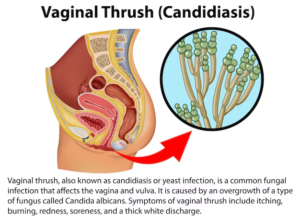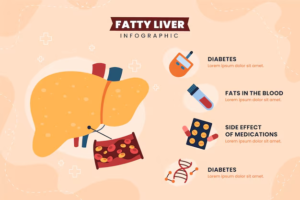Creating Herbal Poultices and Compresses: A Comprehensive Guide
Creating Herbal Poultices and Compresses: A Comprehensive Guide in the realm of natural healing, herbal poultices and compresses have been used for centuries to address a variety of ailments and injuries. These traditional remedies are not only effective but also allow us to tap into nature’s bounty to promote health and well-being. In this comprehensive guide, we’ll explore the art of making herbal poultices and compresses, their benefits, and how to use them for various conditions.
What Are Herbal Poultices and Compresses?

Herbal Poultices: A poultice is a soft, moist mass of herbal material applied directly to the skin. It is usually made from fresh or dried herbs mixed with a liquid to form a paste. Poultices can be used to soothe inflammation, draw out toxins, and relieve pain.
Herbal Compresses: A compress involves soaking a cloth in a herbal infusion or decoction and applying it to the skin. Unlike poultices, compresses are typically used with less herbal material and are often used for their warming or cooling effects.
Benefits of Herbal Poultices and Compresses
- Pain Relief: Many herbs have analgesic properties that can help relieve pain. For example, a poultice made from ginger or turmeric can be soothing for muscle and joint pain.
- Anti-Inflammatory Effects: Herbs like calendula and chamomile have anti-inflammatory properties that can reduce swelling and redness in conditions like arthritis or sprains.
- Detoxification: Certain herbs, such as activated charcoal or mustard seeds, are known for their detoxifying properties and can help draw out impurities from the skin.
- Skin Health: Poultices and compresses can promote healing of minor wounds, rashes, and insect bites. Aloe vera and witch hazel are great choices for these purposes.
- Relaxation: Herbal compresses made with calming herbs like lavender or peppermint can help ease tension and promote relaxation.
How to Make Herbal Poultices
Ingredients
- Herbs: Choose herbs based on the condition you want to treat. For example, comfrey and plantain are excellent for wounds, while ginger and cayenne are great for pain relief.
- Binder: To make the herbal material adhere to the skin, you may need a binder such as flour, cornmeal, or oatmeal.
- Liquid: Use water, herbal tea, or even apple cider vinegar to mix with the herbs. The choice of liquid can depend on the type of herb and the condition being treated.
Equipment
- Mixing bowl
- Spoon or spatula
- Cloth or gauze (optional)
- Clean towel or bandage
Instructions
- Prepare the Herbs: If using dried herbs, grind them into a fine powder using a mortar and pestle or grinder. Fresh herbs should be finely chopped.
- Mix the Poultice: In a mixing bowl, combine the herbs with a small amount of liquid to form a thick paste. Add your binder if necessary to achieve the right consistency.
- Apply the Poultice: Spread the paste evenly on the affected area. You can use a cloth or gauze to hold the poultice in place if needed.
- Cover and Secure: Place a clean cloth or bandage over the poultice to keep it in place. Leave it on for 20-30 minutes, depending on the severity of the condition and the type of herb used.
- Clean Up: Gently remove the poultice and wash the area with warm water. Apply a soothing lotion or oil if needed.
How to Make Herbal Compresses
Ingredients
- Herbs: Similar to poultices, choose herbs based on your needs. For a general relaxing compress, consider using chamomile or lavender.
- Liquid: Prepare an herbal infusion or decoction by boiling the herbs in water. Allow it to cool to a comfortable temperature.
Equipment
- Heatproof bowl or container
- Clean cloth or towel
Instructions
- Prepare the Herbal Infusion: Place the herbs in boiling water and let them steep for about 10-15 minutes. Strain the herbs out and allow the liquid to cool to a warm, comfortable temperature.
- Soak the Cloth: Dip a clean cloth or towel into the herbal infusion, making sure it is thoroughly saturated.
- Apply the Compress: Wring out excess liquid and apply the warm, damp cloth to the affected area.
- Leave It On: Keep the compress in place for 10-20 minutes. Re-soak the cloth in the herbal infusion as needed to maintain warmth.
- Clean Up: After removing the compress, pat the skin dry and apply a soothing moisturizer if needed.
Recipes for Common Conditions
1. For Muscle Pain
- Herbal Poultice: Mix 1 tablespoon of dried ginger powder with enough water to make a paste. Add 1 teaspoon of cayenne pepper for added heat. Apply to the affected area and leave for 20 minutes.
- Herbal Compress: Infuse 1 tablespoon of dried arnica flowers in 2 cups of boiling water. Cool and use as a warm compress on sore muscles.
2. For Wounds and Cuts
- Herbal Poultice: Combine 1 tablespoon of dried comfrey leaves with a few drops of water to make a paste. Apply directly to the wound and cover with a clean bandage.
- Herbal Compress: Infuse 1 tablespoon of dried calendula flowers in 2 cups of boiling water. Cool and apply the warm infusion as a compress to promote healing.
3. For Insect Bites and Rashes
- Herbal Poultice: Mix 1 tablespoon of fresh plantain leaves with a bit of water to make a paste. Apply to the bite or rash to reduce itching and inflammation.
- Herbal Compress: Infuse 1 tablespoon of dried chamomile flowers in 2 cups of boiling water. Cool and use as a compress on the affected area.
Tips for Success
- Patch Test: Before applying any herbal remedy, do a patch test on a small area of skin to check for any allergic reactions.
- Use Fresh Herbs: Whenever possible, use fresh herbs for their potent medicinal properties. Dried herbs can also be effective but may be less potent.
- Proper Storage: Store unused herbal poultice and compress materials in a cool, dry place. Make fresh preparations as needed for the best results.
- Consult a Professional: If you have any chronic conditions or are pregnant, consult with a healthcare provider before using herbal remedies.
Conclusion
Creating Herbal Poultices and Compresses: A Comprehensive Guide are powerful tools in the natural healing toolkit. By harnessing the healing properties of herbs, these remedies can provide relief from pain, inflammation, and skin issues. Creating Herbal Poultices and Compresses: A Comprehensive Guide With a bit of practice, you can create effective poultices and compresses tailored to your specific needs. Always remember to choose herbs wisely and follow safety guidelines to ensure a positive healing experience.








Leave a reply